A look at how European venues are evolving
As in the UK, golf has seen a boom in participation in Europe in the last three years, but venues are also not immune to both environmental and cost of living challenges. Here, we look at facilities in several different countries to see how they’re being shaped by modern threats and opportunities.
A report published last year by The R&A and the European Golf Association found that golf participation in Europe, as in the UK, has soared during the pandemic. The continent now has over 10.6 million golfers, a huge increase from the 7.9 million when the research was last conducted in 2016.
The growth is also all over the continent: Iceland has the highest proportion of total golfers in its population (17.7 percent), Germany is the top market for the number of registered women golfers (221,865), Sweden for junior golfers (61,839), and Latvia and Belarus came out top for overall participation growth in the previous five years (both saw a rise of more than 150 percent).
Greece
Greece is famous for many things, but you wouldn’t necessarily consider golf to be one of them.
While the country is recognised globally for being the cradle of western civilisation, the founder of democracy, the birthplace of the Olympic Games and for giving the world the likes of the great philosophers Socrates, Plato and Aristotle, to name just a few, you would generally struggle to list any golf courses or resorts. That is until now.
At the forefront of the country’s burgeoning golf tourism drive has been Costa Navarino in The Peloponnese, with the venue’s combination of signature 18-hole golf courses, five-star accommodation and numerous other leisure and amenities proving increasingly irresistible for players from across Europe and beyond.
And the Mediterranean’s prime sustainable destination took its status to new heights earlier this year with the eagerly anticipated opening of Costa Navarino’s new 36-hole Navarino Hills golf development.
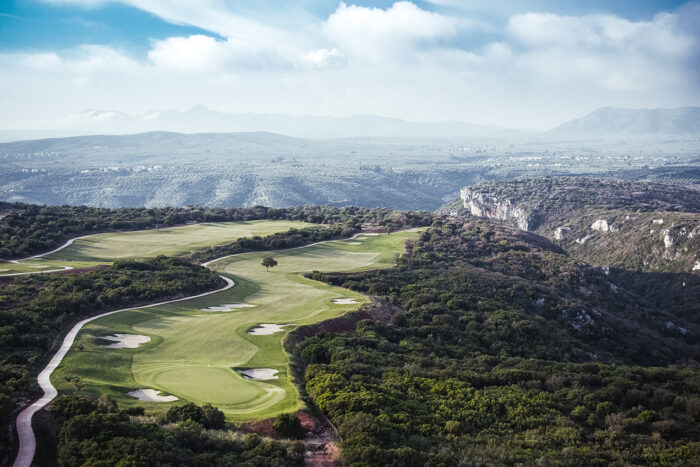
Costa Navarino
Designed by two-time Masters champion José María Olazábal, the two layouts provide the ideal complement to Costa Navarino’s two existing signature golf courses – The Dunes Course (designed by Bernhard Langer in association with European Golf Design) and The Bay Course (created by Robert Trent Jones Jr.) Costa Navarino’s guests can now enjoy the challenge of four signature golf courses within a 13km maximum distance.
Olazábal said: “Costa Navarino ranks among the most beautiful places I have ever been to. Over the past five years, we have worked hard to shape two courses that not only respect the stunning surroundings but that also fit as naturally as possible into the terrain.
“The two courses are distinct in character. Golfers will find the International Olympic Academy Golf Course to be more polished in style and full of spectacular views across the Bay of Navarino while the Hills Course offers more of a rural feel, where we take you out through the gently rolling hills.
“Costa Navarino has developed into a spectacular golf destination, and I invite everyone to come and experience it for themselves.”
Blessed with an outstanding array of attractions away from the fairways and an idyllic climate, everything we love about Greece is to be found here, blending world-class golf with the finer things in life and first-rate, genuine service.
Situated in Greece’s southwest Peloponnese and a short and scenic drive from Kalamata airport, Costa Navarino opened in 2010 – fulfilling a lifelong ambition of its founder, shipping magnate and keen environmentalist Captain Vassilis Constantakopoulos, to create a sustainable tourism development in his home region of Messinia.
Launched in partnership with the International Olympic Academy and the Hellenic Olympic Committee, the new International Olympic Academy Course plays around the western part of the Navarino Hills property and benefits from having over half its holes along the ridge of the hill overlooking the Bay of Navarino.
Measuring 6,366m, the par 72 layout features two nines distinctly different in layout. While the front nine wanders through old olive groves in typical Greek landscape, the back nine plays along the edge of the cliff and provides spectacular sea views.
The Hills Course is located on the eastern side of the property and is perhaps best described as a scenic golf journey through nature. The course fits seamlessly into the land and, along the way, passes old olive trees, ancient rock walls and stunning ravines that carve deep into the Kinigou Hills.
In line with Costa Navarino’s commitment to sustainable development, a water reservoir with a capacity of 485,000m3 has been built to meet the irrigation needs of both courses. To keep water consumption to a minimum, all fairways, greens, tees and rough areas have been seeded with a combination of hard-wearing grasses suitable to the local climate, while 52,000 indigenous forest plants, shrubs and seasonal local flowers and herbs have also been planted.
In addition, the new Navarino Hills golf facilities also feature a 60-bay driving range and a 15,000m² short game area, with the clubhouse at Navarino Hills also opening at the same time. Designed by acclaimed architect Lubomír Zeman and built using local stone materials, it has been created with the aim of achieving class A+ in energy efficiency and features photovoltaic panels.
Italy
Verdura Resort is at the forefront of European golf’s increased drive to protect the environment after adopting an enhanced long-term strategy to improve the top Sicilian venue’s sustainable footprint.
The luxury resort – a Rocco Forte hotel and home of the European Tour’s Rocco Forte Sicilian Open– has developed and implemented a series of forward-thinking initiatives across its array of five-star golf and lifestyle facilities to reduce its impact on the planet – with the areas of water consumption, energy, waste and paper usage all addressed.
As well as improving sustainability on its two 18-hole championship golf courses and nine-hole executive par three course, Verdura Resort has introduced a range of measures across other sectors of its business including in its bars and restaurants, hotel and villas and award-winning spa.
At the heart of the resort’s enhanced approach to conservation are its two 18-hole layouts – the West Course and the East Course, which reopened to widespread acclaim last October following a major upgrade by world-renowned golf architect Kyle Phillips.
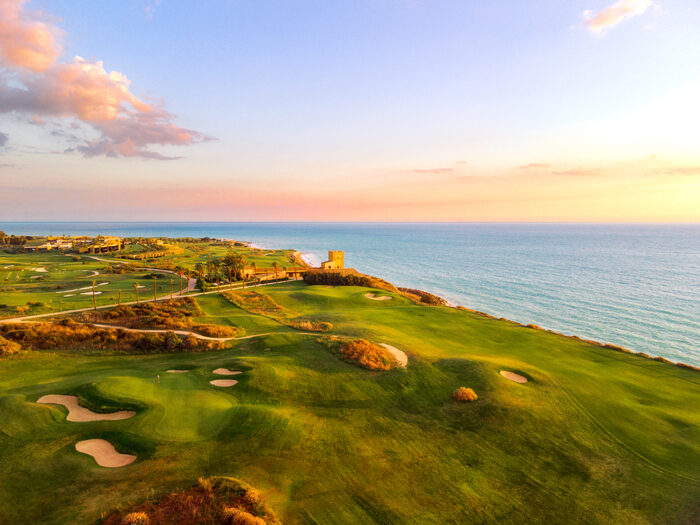
Verdura Resort
With a view to maximising efficiency and reducing the use of non-renewable resources, the resort’s greenkeeping team has installed a selection of more eco-friendly grasses on the tees, fairways, putting surfaces and rough areas.
In addition, Verdura Resort has upgraded its golf-course irrigation practices by drawing water from two sources. Committed to reducing its water consumption and use of pesticides, part of its irrigation needs come from the resort’s own sewage treatment plant, with the effluent water mixed in a lake with water pumped out of a nearby river that would otherwise go into the Mediterranean.
The venue’s long-term commitment to protecting the environment has been mirrored away from the fairways, with Verdura Resort’s sustainable strategy featuring an array of measures designed to reduce its carbon footprint.
Improved recycling, individually controlled air-conditioning systems, harvesting rainwater to be reused and offering guests newspapers and restaurant menus to read online are among the initiatives to be introduced.
Electric buggies and e-bikes for guests to use to explore the surrounding area while, with solar panels already having been installed at the resort, plans are at an advanced stage for Verdura Resort to start producing its own electricity to power some of its infrastructure.
Spain
Voted ‘Spain’s Best Golf Course’ at the 2021 World Golf Awards, Las Colinas Golf & Country Club offers an array of outstanding golf, sports and lifestyle facilities in a low density, high-quality residential venue that promotes and cares about its natural environment.
At the heart of Las Colinas Golf & Country Club is its 18-hole golf course which, designed by acclaimed American architect Cabell B. Robinson, is ranked among Europe’s top 100 courses and is a regular host of Stage 2 of the European Tour Qualifying School.
Recent work to further improve the sustainability of the golf course and its facilities has included:
The redesign of the 13th and 15th holes. Working in association with Golf Environment Organisation’s OnCourse programme, the changes made over the last two years will not only reduce the amount of water, fertiliser and maintenance needed but also create new natural wildlife habitats for animals that live on the course to thrive.
The resort has removed Bermuda turf, planted native trees and shrubs and started the turf conversion to a native plant area, while sprinkler irrigation in these areas will change to drip irrigation for trees and remove irrigation completely at the second stage. The work undertaken will reduce the amount of water needed per year by around 4500m³ as well as cutting energy costs. In addition, tall fescue has been planted on the ground to kill Bermuda grass which, once removed, will be replaced by the Eragrostis curvula plant.
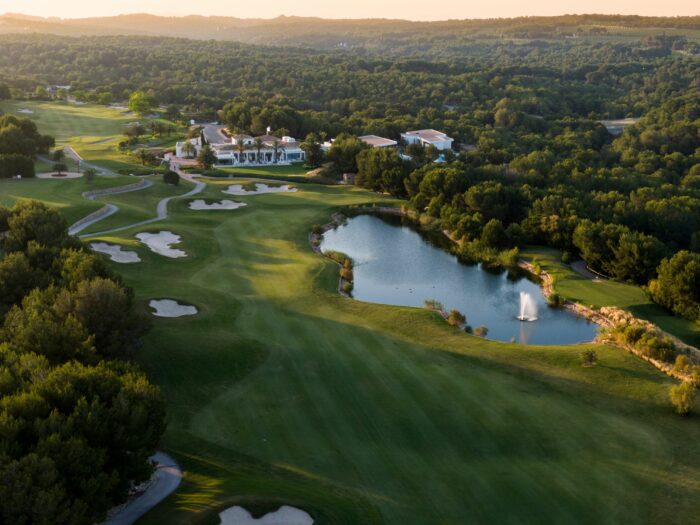
Las Colinas Golf & Country Club
Full renovation of course bunkers. Las Colinas is in the middle of a two-year renovation programme of all the bunkers on its acclaimed Cabell B. Robinson-designed course using the ‘Better Billy Bunker’ system employed by a collection of the world’s most prestigious golf venues including 2022 US Open host Brookline, Gleneagles, Oakland Hills and Whistling Straits – venue for the 2021 Ryder Cup. Installed at hundreds of golf clubs across North America, Europe and worldwide since 1994, the environmentally friendly construction method was designed by Billy Fuller, former golf course superintendent at Augusta National. Applying a two-inch gravel layer over the bunker floor and herringbone tile system, which is then capped with a geo-textile liner, the innovative method has been created with the aim of minimising sand erosion and contamination from native soils during storms and heavy rain. Research has shown that the system consistently reduces manpower requirements in bunker rainstorms by 80 percent or more, and director of golf Jon Brook believes that the bunker upgrade will greatly enhance the world-class golf experience that Las Colinas offers when it is completed in July 2023.
Electric car charger. A Tesla and conventional electric car charger were installed at Las Colinas Golf & Country Club in 2017 in order to offer free electric car charging points to customers and promote the use of these kinds of cars to all visitors.
Solar panels on the maintenance roof. Solar panels were installed on the maintenance shop roof in November 2019. Having the capacity to produce 18,48kW means that the resort now produces more energy than it needs, enabling the surplus to be sold to the energy dealer company. Overall, the maintenance shop has a positive balance in terms of energy consumption / production.
Water agent use on fairways and greens. Since 2016, a water agent based on long-term 3D surfactants has been used on all fairways, tees, approaches and greens, leading to a reduction in consumption of 40,000m³ per year.
Research and development projects with two companies to test water-savings products. Las Colinas is currently working with two international companies, collaborating in research and the development of two different products in a bid to reduce the amount of irrigation water used on golf courses. The first one of these studies is being done with Valagro and the second is with ICL.
Liquid overseeding. Las Colinas is proud to be the first golf course in its region to start using pigments of Bermuda grass and turf on fairways and approaches during the winter. Replacing the more traditional method of overseeding with Lolium perenne, this new approach will save water and cut down on the amounts of fertiliser and chemicals used.
Landscaping based on native trees and plants. From 2013, Las Colinas has been using native plants instead of ‘more visual’ plants in its landscaped areas (around 60,000m²) in order to save water and maintenance costs. Making the change has reduced the amount of pruning needed and waste produced, while also cutting down on the levels of herbicides used with the plants needing less water. Plants used include pinus halepensis, pinus pinea, chamaerops humilis, olea europeae, ceratonia siliqua, cistus albidus, pistacia lentiscus, rosmarinus officinalis and nerium oleander.
Las Colinas has also introduced fish in its lakes in order to control the level of algae in them and reduce the amounts of chemical products used to control algae blossoms. The programme has seen more than 1,500 fish added to the lakes over the last 10 years. This September, Las Colinas upgraded its irrigation control computer with the installation of a new Toro Lynx irrigation system. Costing €36,000, the system allows the resort to save on its energy costs by adapting better to the needs of pump stations and golf course characteristics. It also allows each station to be programmed to the second rather than to the minute, further saving on costs.
Portugal
Nestling in the heart of the Ria Formosa Natural Park, Quinta do Lago has always been passionate about the environment – only nine percent of the resort has been built on with the rest devoted to golf, water and lakes and green spaces.
Following the Golf Environment Organisation’s OnCourse programme with a goal to become certified, the Portuguese resort promotes a multi-tiered plan with the emphasis on outdoor living and incorporates three key principles: to foster nature, conserve resources and support the community.
As well as featuring improved sustainability on its three 18-hole championship courses – including a €7m makeover of the iconic South Course – the resort has adopted an enhanced approach to conservation across other sectors of its business including at its world-class sports hub The Campus, The Magnolia Hotel, its 14 bars and restaurants and general resort services.
Recent measures adopted include:
Turfs and grasses. The fairways and tees on the South Course have been replaced with Hybrid Bermudagrass Tifway 419. The maintained rough has been changed to Kikuyugrass, which is now endemic in the region and will continually lower the resort’s irrigation and resource consumption.
Irrigation. In 2020, Quinta do Lago changed its irrigation practices to be based on evapotranspiration by taking information from its on-site weather stations. This method of irrigation gives the plant exactly what was lost from the previous 24 hours, plus enough water to grow and stay healthy. Last winter, the resort invested in a major upgrade of the irrigation pumps on the South Course which will improve efficiency and save water and power. The same upgrades are planned on the North Course this winter. Rather than aiming for an unrealistic saving year-on-year, the resort aims to keep consumption below the past five years’ average consumption. This will remove the irregularities of rainfall and heatwaves as well as providing more accurate targets to be set.
Planting and re-naturalisation using native plant species (mastic tree, salvia cistus, kermes oak, olive tree, strawberry tree, carob tree, among other options), developing a local biodiverse landscape that creates a genuine golf experience, and the purchase of a new electric golf buggy fleet to avoid using of fuel.
The club has also built shelters for insects, placed nest-boxes for birds, constructed bee houses, introduced native plants to control invasive exotic species and removed single plastic usage from its restaurants.
Farm to table. In 2019, Quinta do Lago created its own QFarm to provide its restaurants with organic and clean vegetables and herbs.
Information boards in the golf courses and nature trails with existing species. Content and photos from the annual wildlife survey is divided in six panels, two for each golf course, with information about the most common wildlife present. Plus a new nature trails booklet with details about species in the resort.
The club is also helping with the cost of living crisis by offering affordable prices for juniors to learn the sport and support in trips to participate in regional / national tournaments.
Poland, Austria and Finland
One of the leading golf resorts in Europe is reaping the rewards of an ongoing and extensive programme of far-ranging improvements. During 2022, Modry Las Golf Resort – The PGA National Poland forged ahead with a series of on-course improvements, started building new accommodation options and introduced a luxurious spa.
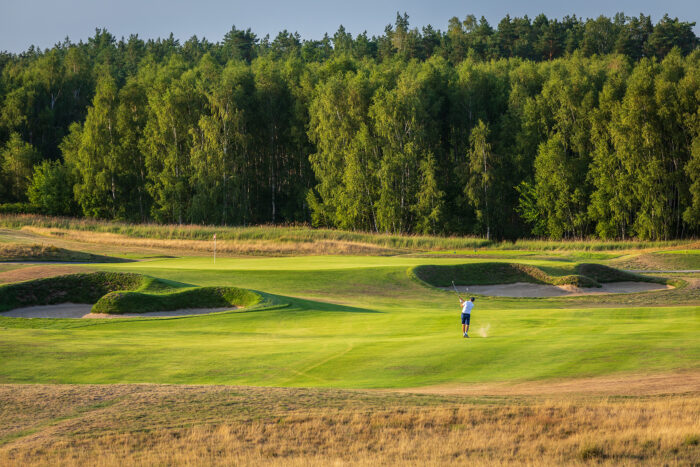
Modry Las Golf Club
The ambitious developments, which include six new garden suites due to open next season and the finishing touches to an impressive clubhouse, conclude a programme of works designed to further elevate the resort. More recently, significant tweaks to the irrigation system that underpins Poland’s only signature-designed golf course have brought presentational improvements during what has been a testing summer.
“In many ways, the investments we made this year are the final stages of a much broader plan,” explained Arthur Gromadzki, chairman of Modry Las. “In particular for our championship course, the accumulative effect of these projects has meant we are able to present the course to a much higher standard. This has proved vital during an extremely hot and dry summer. Really, we couldn’t have asked for a better test of the course and the work we’ve put in, particularly in the irrigation system. I’m glad to say, we’re now seeing the benefits of our investment.”
The summer of 2022 was the hottest ever recorded in Europe which, not surprisingly, affected golf resorts across the continent. Despite the heat, Modry Las Golf Resort enjoyed some of the best playing conditions ever thanks to an expanded network of sprinklers and an upgraded control system resulting in lush fairways and smooth-running greens. The launch of a multi-purpose jetty for water sports around the resort’s fabulous Polish lakes was also a welcome addition.
Getting around the extraordinary sweeping fairways and infinity greens of the Gary Player-designed championship course has also become even more enjoyable with 700 meters of new asphalt cart paths and additions to the road network around the resort.
“The team at Modry Las has been working towards a goal of creating one of the best golfing experiences in Europe,” he noted. “With each year that passes, we are proud to achieve our targets and continue on that journey. 2022 has been a particularly important year for us for a number of reasons, but none more so than being able to emerge from a worldwide pandemic stronger, sleeker and greatly enhanced.”
As if to underline that commitment, the resort’s head of greenkeeping applied his knowledge and experience during the 2022 BMW PGA Championship by supporting the greenkeepers at Wentworth in England. “It was an incredible opportunity to not only apply my skills and knowledge at another top-tier course, but to also observe the meticulous preparation needed at an elite golf event like The PGA Championship,” Wojciech Slupeczanski said. “I’ve returned from Wentworth with great memories and plenty of ideas for Modry Las.”
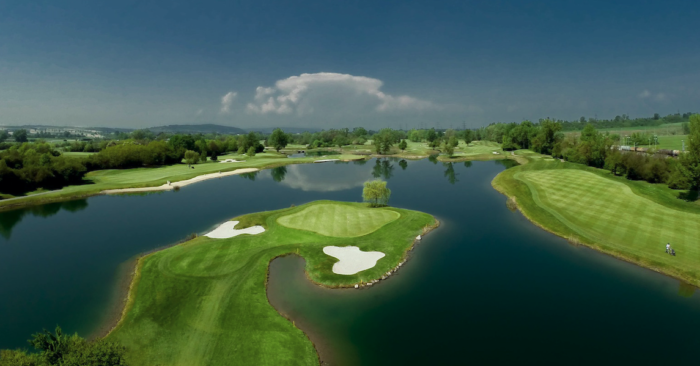
Diamond Country Club
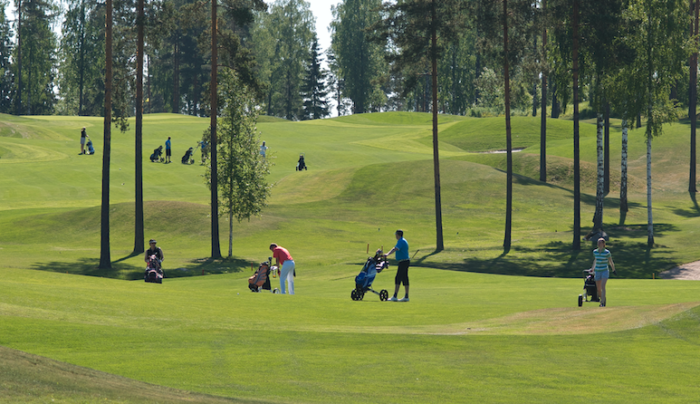
Linna Golf
Elsewhere, Diamond Country Club in Austria has said it has attracted new golfers and families to its nine-hole course (which has seen around 3,000 rounds from non-members in two years) amid inflationary pressure with a flexible, affordable membership option, and Linna Golf, Finland has also helped with the cost of living crisis, by offering reduced annual subscriptions for people under 30, a move it describes as a huge success.















Let me tell You a sad story ! There are no comments yet, but You can be first one to comment this article.
Write a comment